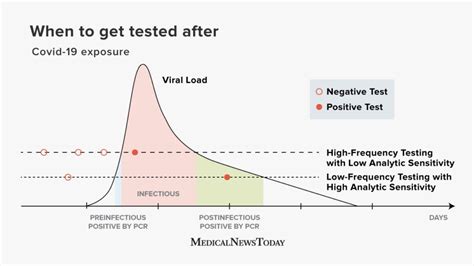How Long After Exposure Do You Test Positive for COVID-19 in 2023?
The time it takes to test positive for COVID-19 after exposure depends on several factors, including the variant of the virus, your immune system, and the type of test used. While the incubation period (time from exposure to symptom onset) can vary, understanding the testing timeline is crucial for managing your health and protecting others.
Understanding the Incubation Period
The incubation period for COVID-19 is typically 2 to 14 days, with the majority of people developing symptoms around 5 days after exposure. However, this is just an average. Some individuals may show symptoms as early as 1 day post-exposure, while others may remain asymptomatic or develop symptoms up to 14 days later. The newer variants have shown slightly faster incubation periods in some cases.
This means that even if you feel perfectly fine immediately after a potential exposure, you shouldn't assume you're in the clear. Consistent monitoring and testing are vital.
Testing After Exposure
The timing of your COVID-19 test significantly impacts the accuracy of results. Here's a breakdown:
Antigen Tests:
- When to Test: Antigen tests are best used 5-7 days after potential exposure, or sooner if symptoms develop. They are rapid and convenient, but less sensitive than PCR tests, meaning they might produce a false negative, especially early in the infection. Repeating the test after 24 hours is advisable if your initial test is negative but you're still experiencing symptoms.
PCR Tests:
- When to Test: PCR tests are highly sensitive and can detect even low levels of the virus. While they can detect infection earlier than antigen tests, they are not as readily available for at-home testing. A PCR test can be taken any time after a potential exposure but may yield a false negative if taken too early. Testing 5-7 days post-exposure or sooner if symptoms develop provides the best balance of accuracy and timely results.
At-Home vs. Clinical Testing:
Both at-home antigen tests and clinical PCR tests play a role in detecting COVID-19. The availability and ease of access to at-home tests makes them convenient for frequent monitoring. However, for confirmation or when results are ambiguous, clinical testing might be preferred.
Factors Affecting Testing Timeline
Several factors influence the time it takes to test positive:
- Viral Load: Higher viral loads from closer contact or exposure to more infectious individuals lead to quicker positive results.
- Variant: Different COVID-19 variants might have slightly different incubation periods and transmission rates.
- Individual Immunity: Prior infection or vaccination can influence the time it takes for symptoms to appear and for a positive test result. It does not guarantee you won't contract the virus again, however.
- Testing Methodology: The sensitivity of the test (antigen vs. PCR) significantly affects the likelihood of a positive result at different points after exposure.
What to Do After Exposure
Regardless of test results, following these guidelines after potential exposure is crucial:
- Monitor for Symptoms: Pay close attention to symptoms such as fever, cough, shortness of breath, fatigue, and loss of taste or smell.
- Isolate: Isolate yourself from others, even if you feel well, until a negative test confirms you are not infected.
- Contact Tracing: Inform individuals you have been in close contact with about your possible exposure.
Disclaimer: This information is for general knowledge and does not constitute medical advice. Consult a healthcare professional for personalized guidance.
